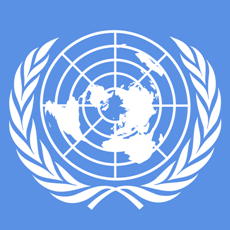Hot Water
A little thought is due considering that institutions are blissfully aligning themselves with the UN’s controversial sustainable development goals, and transforming their perspectives and temperaments in order to be judged favourably according to the ESG (environmental, social and governance) metrics which manifest the UN SDGs (sustainable development goals). Irrespective of whether sustainable development of society and environment is the purpose of a corporation, a university or a dicastery, and irrespective of alignment with UN SDGs by the governments of nations’ that will oblige business and society to conform, the term “sustainable development” does sound fine and dandy. And yet, a pool of water looks quite the same whether it’s hot or cold, and it would be worthwhile probing with your toes prior to jumping in body and mind – individually and institutionally.
Catastrophic Semantics
As in law, when certain terms take on very specific meaning which on occasion are far removed from their meaning and sense in common parlance, so it is with lingua yuena.
The UN’s World Commission on Environment and Development (WCED) was instituted in 1983 by UN Secretary General Perez de Cuellar with the task of formulating a global strategy for sustainable development[1]. The commission’s president was Gro Harlem Brundtland, after whom the commission and the report on Sustainable Development were named[2]. She was primarily famed for her efforts and success in legalising abortion in Norway, and was head of its Labour party which campaigned for abortion on request since 1969. She was eventually three-times the Prime Minister of Norway, elected first vice president of Socialist International in 1996 in the company of other vice presidents such as Tony Blair, Antonio Guterres and Shimon Peres[3], and Director-General of the WHO from 1998 to 2003[4].
The idea of sustainability may in general be applied broadly and extensively. However, the term entered “Our Common Future”, the 1987 report of the Brundtland Commission via the biological discipline of ecology, rooted in studies in the 1950s specifically related to hypotheses on populations[5]. By the seventies, concepts and models useful to the fishing industry such as the “capacity of sustainability” or carrying capacity reached due to scarcity of food – of codfish and sole, began to be applied to humanity. The Brundtland Report brought global prominence to the concept of sustainable development, and it initiated the globalised agenda for muscling and realising the ecologistic sense of sustainability. Despite the innocuous and noncommittal definition of sustainable development that the report begins with, the nature of sustainable development is revealed within. The report deplored the increase of humanity and saw people as an obstacle to development and a bane on the Earth, in an erroneously presumed and empirically disproved zero-sum Erlichian system[6].
“Sustainable Development” called for the reduction of population growth rates particularly in the developing world. The report innovatively proposed the integration of birth control programs into nations’ policies for health, education, development and environment. Thus was conjoined the international battles[7] for the proliferation of abortion[8], abortifacients, contraception, sterilisation, and euthanasia, with programs for socio-economic development and environment protection. These anti-natalist and anti-human objectives were to be enabled by the redefinition of the family, elimination of parental prerogatives and promotion of adolescent and adult libertinism.
The Brundtland Report advocated “change in attitudes” and “reorientation of policies and institutions” and called for an international UN Conference to review, follow-up and set benchmarks. It also proposed the promulgation of what came to be known as the Earth Charter to facilitate the world’s transition into sustainable development – a modern international ethical code to supersede the Universal Declaration of Human Rights in which the centrality and uniqueness of the human being is replaced by a general “community of life” to love and have compassion for, and “gender equity” is pitched in for good measure.
International conferences under the auspices of the UN took place in quick succession starting with the international forum in Amsterdam in 1989[9] to celebrate the twentieth anniversary of the establishment of the UNFPA[10] – which had been established for the very purpose of decreasing the population in the developing world. The UN Conference on Environment and Development (UNCED), often called the Earth Summit was held in Rio de Janeiro in 1992, followed by those in Vienna (1993), Cairo (1994), Copenhagen (1995), Beijing (1995), Istanbul (1995) and Rome (1996) – where governments are represented, and where governments make commitments at the end of each. The twenty-year Plan of Action which constituted Agenda 21, the 21 being a reference to the twenty-first century, was subscribed to in Rio. Agenda 21 affirmed the two points that constitute the essence of Sustainable Development: 1) limit population in poor countries (quantity) and 2) reduce economic growth in rich countries (quality)[11].
Burning
The Agenda 21 formulated in 1992 in response to the Brundtland Report, which presupposed an ecologistic sense of sustainable development made applicable to humanity – regarded as microorganisms in an agar plate, leads into the UN SDGs of 2015 which manifest themselves today via the institutional ESGs which are soon to be standardised and assimilated. This understanding helps to bring into perspective the attempts to confiscate Dutch farmland, the sustenance and escalation of the energy crisis and the 15-minute cities, in addition to the inclusions of quotas[12] and parities for women and the anti-family identities, the expenditures on birth control and abortion instead of on combatting hunger and disease, and perhaps even the promotion of vaccines that caused more harm than the viral pathogen[13].
[1] https://sustainabledevelopment.un.org/content/documents/5987our-common-future.pdf (13 mar)
[2] https://todayinconservation.com/2018/04/april-20-gro-harlem-brundtland-godmother-of-sustainable-development-born-1939/ (22 mar)
[3] https://www.socialistinternational.org/congresses/xx-congress-of-the-socialist-international-new-york/ (accessed 15th March 2023)
[4] https://srhr.org/abortioncare/ (16 mar)
[5] https://c-fam.org/white_paper/sustainable-development/ (13 mar)
[6] https://www.cato.org/economic-development-bulletin/julian-simon-was-right-half-century-population-growth-increasing#findings (21 mar)
[7] Jacqueline R Kasun, The War Against Population: The Economics and Ideology of World Population Control, 1998; and a revised edition, 1999.
[8] https://dreshandias.substack.com/p/abortion-marketing-for-the-third?sd=pf (22 mar)
[9] https://www.jstor.org/stable/1972550 (16 mar)
[10] https://www.pop.org/presidents-page-does-the-world-need-a-global-population-control-agency/ (15 mar)
[11] https://sustainabledevelopment.un.org/content/documents/Agenda21.pdf (accessed 15th March 2023)
[12][12] https://open.substack.com/pub/dreshandias/p/diversity?r=1qgpbn&utm_campaign=post&utm_medium=web
[13] https://open.substack.com/pub/dreshandias/p/remedy-remedy?r=1qgpbn&utm_campaign=post&utm_medium=web











